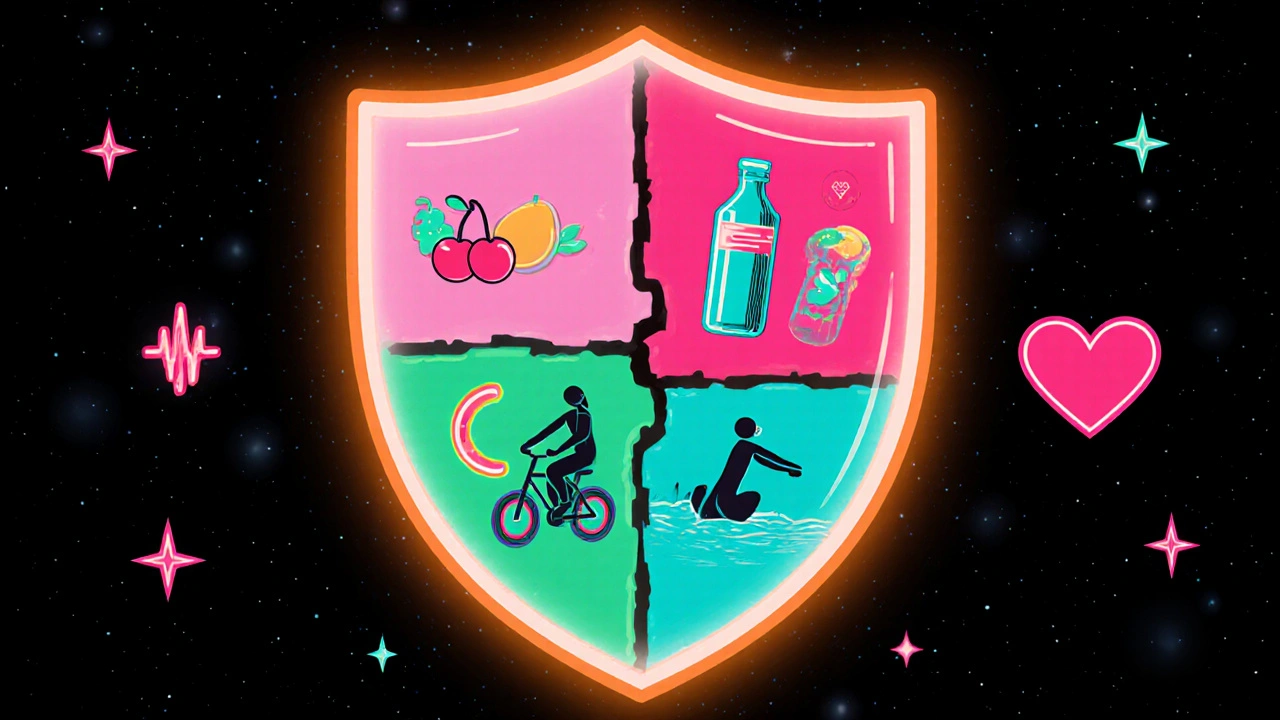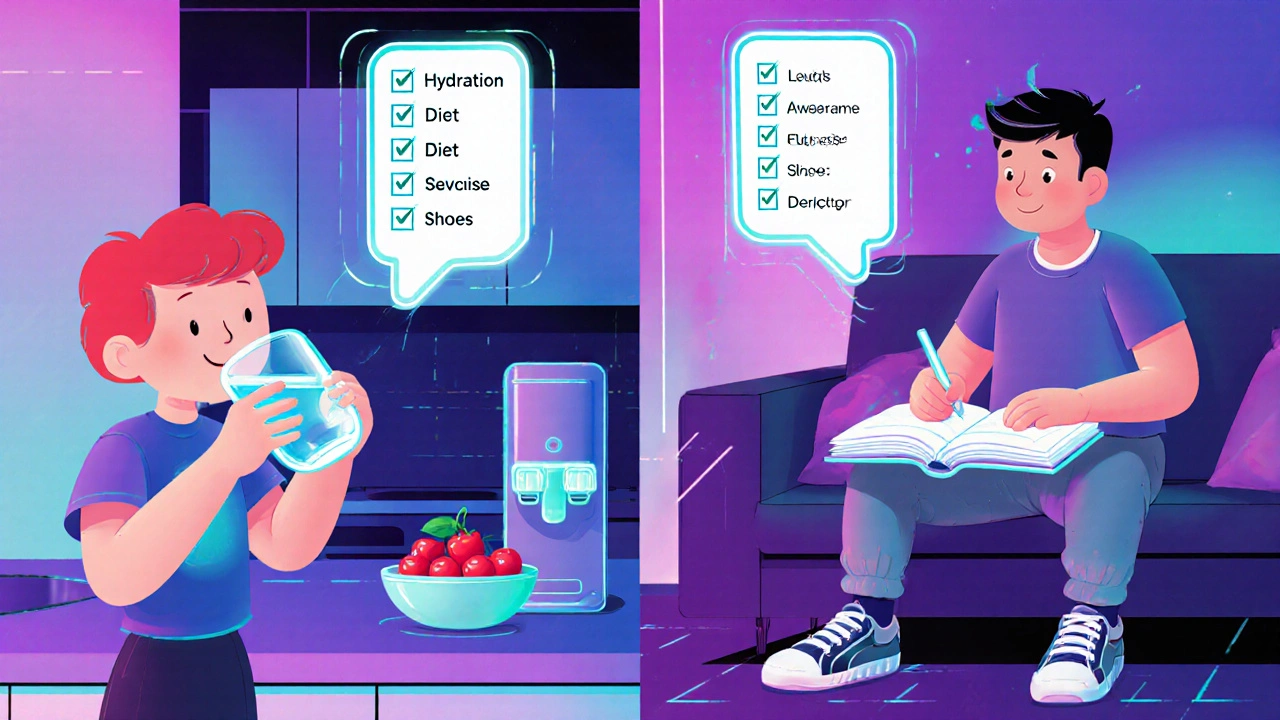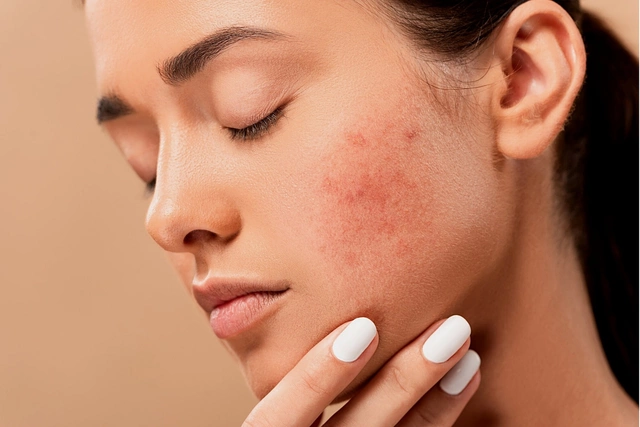Gout Attack Risk Calculator
Calculate Your Gout Attack Risk
This tool helps you assess your current risk of gout attacks based on your lifestyle habits and medical management. The results provide personalized recommendations to reduce your risk.
When dealing with gouty arthritis is a form of inflammatory arthritis caused by elevated uric acid levels that form crystal deposits in joints, protecting the affected joints becomes essential. Untreated attacks can erode cartilage, shrink joint space, and lead to permanent deformities. The good news? Most of the damage is preventable with the right habits, and you don’t need a medical degree to start protecting your joints today.
What Triggers Joint Damage in Gout?
Two culprits drive the wear and tear: the chemical environment inside the joint and the mechanical stress you place on it. First, uric acid is a waste product from purine metabolism that, when too high, crystallises into monosodium urate crystals. These sharp needles pierce the synovial lining, spark intense inflammation, and eventually form chalky lumps called tophi large crystal deposits that can carve into bone and cartilage.
Second, repetitive or high‑impact movements push the already inflamed tissue beyond its capacity, accelerating cartilage loss. Imagine a rusty hinge; each swing makes the rust spread faster. In gout, the “rust” is crystal‑induced inflammation, and the “swing” is any joint‑stressing activity.
Core Lifestyle Pillars for Joint Safety
Think of joint protection as a three‑layer shield. The innermost layer tackles the chemical cause, the middle layer moderates mechanical stress, and the outer layer supports overall health.
- Dietary control: Lower purine intake (red meat, organ meats, certain seafood) and boost foods that help clear uric acid, such as cherries, low‑fat dairy, and vitamin C‑rich fruits.
- Hydration: hydration increases urine volume, helping the kidneys flush out excess uric acid. Aim for at least 2‑3 liters of water daily, more if you exercise or live in a warm climate.
- Weight management: weight management reduces the load on weight‑bearing joints and improves insulin sensitivity, which in turn lowers uric acid production. Even a 5‑10 % weight loss can cut gout attacks by half.
- Regular low‑impact movement: low‑impact exercise strengthens muscles around the joint without pounding the cartilage. Think walking, swimming, or cycling.
- Medication adherence: Urate‑lowering drugs (allopurinol, febuxostat) and anti‑inflammatory agents (NSAIDs, colchicine) keep crystal formation at bay. Use them as prescribed, especially during flare‑prone seasons.
Exercise Strategies: Low‑Impact vs High‑Impact
Not all movement is created equal. Below is a quick side‑by‑side look at the two categories most people confuse.
| Aspect | Low‑Impact (e.g., swimming, cycling) | High‑Impact (e.g., running, basketball) |
|---|---|---|
| Joint Load | Gentle, distributes force evenly | High peaks of stress on cartilage |
| Inflammation Trigger | Minimal; often reduces swelling | Can provoke flare-ups |
| Cardiovascular Benefit | Excellent | Excellent |
| Suitability During Flare | Can be modified (e.g., water walking) | Usually avoided |
| Long‑Term Joint Preservation | Supports cartilage health | May accelerate wear |
Pick the low‑impact options for daily routines, and reserve high‑impact activities for times when your uric acid is well‑controlled and you’ve been cleared by a clinician.

Medication and Supplement Choices that Support Joint Health
Pharmacology isn’t a magic bullet, but the right combination can dramatically lower the odds of crystal build‑up.
- Urate‑lowering therapy (ULT): Allopurinol and febuxostat inhibit xanthine oxidase, the enzyme that creates uric acid. Target serum urate < 6 mg/dL for most patients.
- Anti‑inflammatory medication: anti‑inflammatory medication includes NSAIDs, colchicine, and corticosteroids to blunt acute attacks. NSAIDs such as naproxen are first‑line for many, while colchicine works well for rapid relief.
- Supplements that may help: Vitamin C (500 mg daily) can modestly lower uric acid, and omega‑3 fatty acids reduce systemic inflammation. Always discuss with your doctor before adding anything.
Consistent use of ULT is the most effective long‑term defense against tophi formation and joint erosion. Skipping doses often leads to rebound spikes that undo weeks of progress.
Practical Daily Habits to Shield Your Joints
Habits are the bridge between knowledge and protection. Here are 10 concrete actions you can start tomorrow:
- Drink a full glass of water as soon as you wake up; repeat every two hours.
- Swap sugary sodas for sparkling water with a splash of citrus.
- Include a serving of cherries or cherry juice (no added sugar) in your breakfast.
- Choose lean proteins like chicken breast, tofu, or legumes over organ meats.
- Limit alcohol to one drink per week; beer is especially high in purines.
- Set a timer to stand up and gently stretch every hour if you sit for long periods.
- Use supportive footwear with good arch support; avoid high heels on bad days.
- Warm‑up with 5‑10 minutes of low‑intensity activity before any workout.
- Keep a simple log of pain level, diet, and water intake to spot patterns.
- Schedule a quarterly check‑in with your rheumatologist to adjust meds if needed.
These steps aren’t fancy, but together they create a climate where crystals can’t thrive and joints stay supple.

When to Seek Professional Help
If you notice any of the following, it’s time to call your doctor:
- Sudden, excruciating pain in the big toe, ankle, knee, or elbow that lasts more than 24 hours.
- Visible swelling, redness, or warmth around a joint.
- Recurring attacks (more than two in six months) despite lifestyle tweaks.
- Development of hard nodules (tophi) on ears, hands, or feet.
- Persistent joint stiffness that interferes with daily activities.
Early intervention can prevent irreversible damage, so don’t wait for the pain to become chronic.
Quick Checklist for Joint Protection in Gout
- Maintain serum urate < 6 mg/dL (or target set by your doctor).
- Stay hydrated - 2‑3 L of water daily.
- Limit high‑purine foods and alcohol.
- Engage in low‑impact exercise 150 minutes/week.
- Adhere to prescribed urate‑lowering medication.
- Track pain and triggers in a simple journal.
- Schedule regular follow‑ups with your rheumatologist.
Follow this list, and you’ll give your joints the best shot at staying pain‑free for years to come.
Can diet alone cure gouty arthritis?
Diet is a powerful tool but not a cure on its own. It lowers uric‑acid spikes and reduces flare frequency. Most patients still need medication to maintain long‑term urate control.
What are the safest exercises during an acute gout flare?
Gentle, non‑weight‑bearing movements like water walking, seated leg lifts, or range‑of‑motion stretches keep the joint mobile without adding stress.
How quickly can urate‑lowering drugs reduce tophi?
Visible reduction often starts after 6‑12 months of consistent therapy, but complete disappearance may take several years depending on size and location.
Is cherry juice really effective?
Several studies show that a daily dose of 250 ml of tart‑cherry juice can lower serum urate by about 0.2 mg/dL and cut flare risk by roughly 30 %.
Should I stop NSAIDs if I have kidney issues?
Yes. NSAIDs can worsen kidney function. Talk to your doctor about alternatives like colchicine or low‑dose steroids during flares.






Sarah Unrath
October 19, 2025 AT 16:22I swear u should start drinking that cherry juice tomorrow its like magic dont wait
James Dean
October 31, 2025 AT 15:22Hydration is key the body clears uric acid more efficiently when water intake is high. Low impact movement keeps joints supple without stressing inflamed tissue. Consistency beats occasional effort.
Monika Bozkurt
November 12, 2025 AT 15:22Your observation regarding the primacy of adequate fluid intake aligns with current pathophysiological models of urate homeostasis.
Empirical data indicate that renal excretion of uric acid is proportionally enhanced by increased plasma volume, thereby mitigating supersaturation of monosodium urate crystals.
Moreover, the mechanistic rationale for low‑impact aerobic modalities, such as aquatic ambulation, rests upon the attenuation of shear stress across the synovial membrane.
Inflammatory cascades are attenuated when mechanical load remains within the physiologic tolerance of the articular cartilage.
Regular engagement in such activity promotes muscular hypertrophy around the joint, providing auxiliary stabilization.
This secondary support diminishes peak joint reaction forces during routine tasks.
Concurrent dietary modulation, particularly the reduction of purine‑rich viands, reduces substrate availability for uricogenesis.
Incorporation of vitamin C–rich fruits has been demonstrated to modestly upregulate renal urate clearance via renal transporter modulation.
Pharmacologic adherence, especially to xanthine oxidase inhibitors, remains the cornerstone of sustained serum urate reduction.
The synergistic integration of these lifestyle vectors establishes a multi‑layered defense against tophaceous deposition.
It is incumbent upon clinicians to individualize target serum urate thresholds, often aiming for <6 mg/dL in most patients.
Patient education should emphasize self‑monitoring of hydration volumes and symptomatic flare patterns.
Utilization of a simple logbook can elucidate correlations between dietary triggers and acute attacks.
Early rheumatologic consultation facilitates dose titration of urate‑lowering therapy before irreversible joint erosion ensues.
Holistic management thus intertwines behavioral, nutritional, and pharmacologic domains to preserve articular integrity.
In sum, your emphasis on water intake constitutes a pivotal, evidence‑based component of comprehensive gout management.
Penny Reeves
November 24, 2025 AT 15:22While the article enumerates a laundry list of recommendations, the underlying premise is simplistic – merely drink more water and avoid steak. Such platitudes overlook the nuanced metabolic dysregulation that drives hyperuricemia, reducing the discourse to a self‑help pamphlet.
Ankitpgujjar Poswal
December 6, 2025 AT 15:22Listen, quit making excuses and put the plan into motion. Hydrate like a champ, swap that ribeye for chicken, and hit the pool hard – results come to those who hustle.
Bobby Marie
December 18, 2025 AT 15:22Yo stop ignoring the tophi you’re already seeing.